Bamboo shines as a symbol of sustainability and eco-awareness, offering a remedy to the escalating concerns about the depletion of our planet’s natural resources. Its importance becomes evident in bamboo’s exceptional ability to serve as a pragmatic alternative to traditional wood. Let’s now delve into the realm of 20 Uses Of Bamboo That You Didn’t Know and uncover its hidden versatility.
Contents [hide]
- 1. Bamboo is used to make many dishes
- 2. Bamboo is used to Medicines
- 3. In the realm of construction
- 4. Bamboo is utilized in the creation of mats
- 5. Bamboo is used to Clothing
- 6. Musical Instruments
- 7. Bamboo is utilized in the creation of Nappies
- 8. Bamboo is utilized in the creation of Beer
- 9. Bamboo finds application in the realm of fuel
- 10. Bamboo is employed in the creation of lampshades
- 11. Bamboo is used for scaffolding
- 12. Bamboo is used as Handbag
- 14. Bamboo is used as Bamboo cups
- 15. Bamboo is used as Chopsticks
- 16. Bamboo is used as Spoon
- 17. Bamboo is used as bowl, placemat
- 18. Bamboo is used as Cabinet
- 19. Bamboo is used to make Table, Chair
- 20. Bamboo is used to make rugs
1. Bamboo is used to make many dishes
Indeed, bamboo plays a crucial role in diverse culinary traditions around the world. Its young shoots, for example, are a delicacy in many Asian cuisines. These tender shoots are not only nutritious but also add a distinct flavor and texture to dishes.
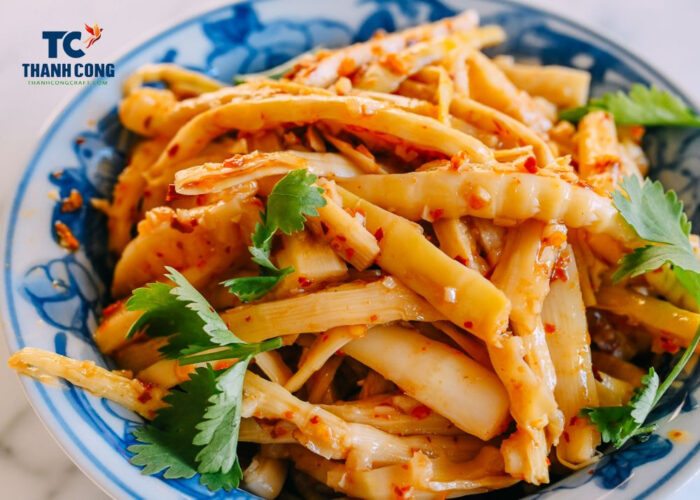
Bamboo is also utilized as a container for cooking or serving food. Bamboo steamers are a staple in Asian cooking, allowing gentle cooking that retains flavors and nutrients. Moreover, bamboo leaves are often used to wrap and cook foods, infusing them with a subtle earthy aroma.
2. Bamboo is used to Medicines
Various parts of the bamboo plant, including its leaves, stems, and roots, are utilized in different medicinal formulations. Bamboo extracts are believed to possess properties that aid in treating conditions such as inflammation, fever, and infections. Additionally, bamboo-based products are incorporated into supplements and herbal remedies, demonstrating the plant’s potential in the realm of healthcare and wellness.
3. In the realm of construction
Bamboo stands as a testament to the ingenuity of early builders, predating the use of concrete and steel. With its robust trunk and flexible nature, bamboo has been employed in crafting enduring houses that have stood the test of time.
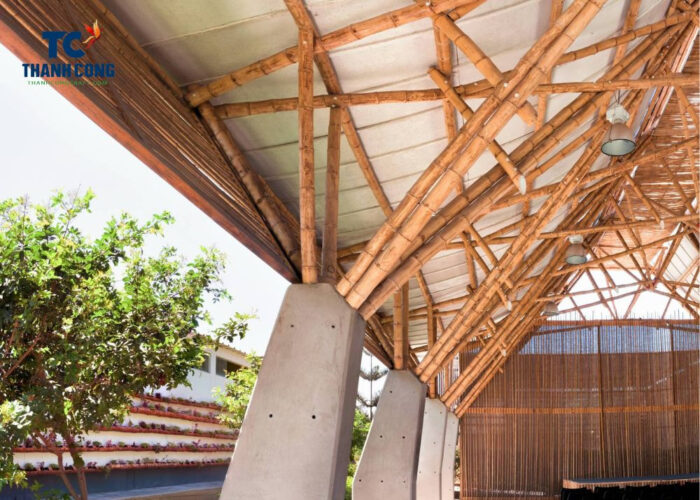
The split bamboo shingles, when intricately arranged, yield walls of both remarkable strength and visual appeal. Even today, bamboo maintains its popularity as a construction material, serving diverse purposes. It reinforces foundations and remains a preferred choice for structural support. Furthermore, in the context of irrigation projects, bamboo is instrumental in fortifying dikes, dams, and other essential infrastructure, showcasing its lasting relevance in engineering endeavors.
4. Bamboo is utilized in the creation of mats
Bamboo mats are woven from strips of bamboo that are carefully harvested and prepared. The bamboo poles are split into thin, flat strips, which are then woven together using traditional techniques. This weaving process creates a sturdy and comfortable surface that can be used for sitting, sleeping, and various other activities.
Furthermore, bamboo’s natural resistance to moisture and insects ensures the longevity of these mats, making them ideal for a variety of environments.
5. Bamboo is used to Clothing
Bamboo fibers are transformed into textiles through a process that yields a material remarkably akin to soft fabric. This bamboo-based fabric boasts natural properties such as breathability, moisture-wicking, and antibacterial attributes.
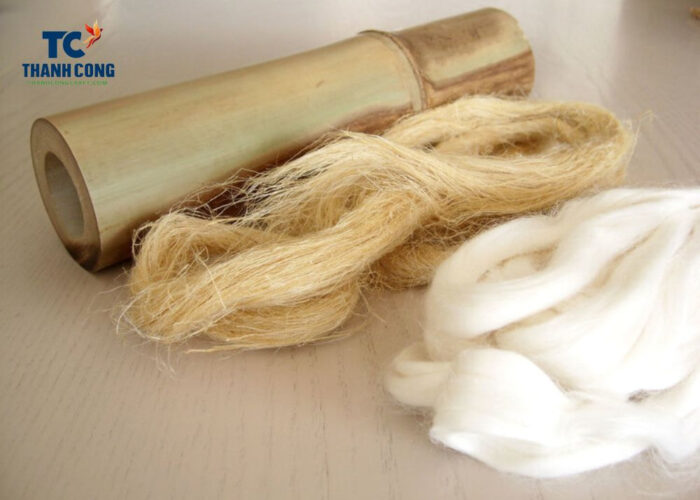
Consequently, it creates clothing that keeps wearers comfortable and fresh. Additionally, bamboo clothing holds appeal for eco-conscious consumers, as the plant’s rapid growth and minimal need for pesticides make it a sustainable alternative to resource-intensive materials. From undergarments to outerwear, bamboo-based clothing presents a fusion of comfort, style, and ecological mindfulness.
6. Musical Instruments
Bamboo unique acoustic properties and versatility lend themselves to crafting instruments with distinct sounds and aesthetics.
Bamboo flutes, for instance, are found in various cultures and produce hauntingly beautiful melodies. Bamboo is also used to make percussion instruments like bamboo xylophones and drums, adding a natural resonance to the music. The flexibility of bamboo allows for experimentation, resulting in innovative instruments that contribute to the rich tapestry of musical expression across the globe.
7. Bamboo is utilized in the creation of Nappies
The natural attributes of bamboo make it an ideal choice for nappies, offering benefits that cater to both infants’ comfort and environmental consciousness. Bamboo fibers possess inherent softness, ensuring a gentle and irritation-free experience for babies’ delicate skin. Additionally, bamboo is highly absorbent, making it effective in managing moisture, a crucial aspect in nappy design.
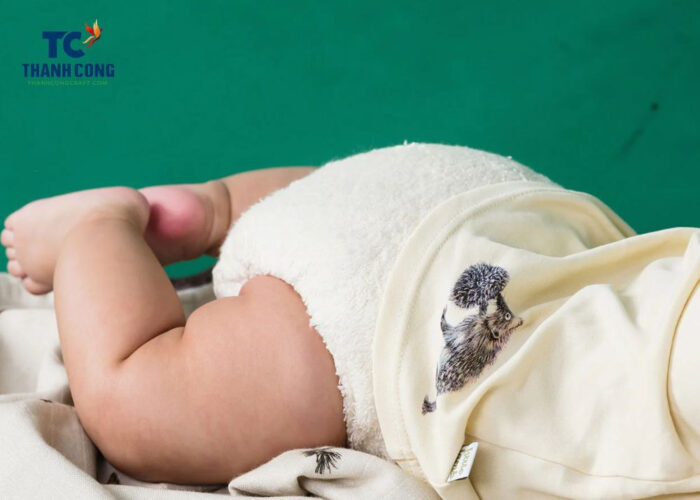
Furthermore, bamboo’s biodegradability ensures that nappies made from this material have a reduced impact on landfills compared to traditional disposable nappies.
8. Bamboo is utilized in the creation of Beer
In the production of beer, bamboo is utilized for its distinct flavor-imparting properties. Brewmasters often employ bamboo as an adjunct ingredient, adding a subtle yet captivating taste to the final product. The woody and grassy notes of bamboo can complement the existing flavor profile of various beer styles, offering a touch of novelty for discerning palates.
Furthermore, the use of bamboo in brewing can serve as a cultural connection, honoring regions where bamboo is deeply rooted in traditions.
9. Bamboo finds application in the realm of fuel
One of the notable uses of bamboo in fuel is its conversion into biomass energy. Bamboo’s fast growth makes it an abundant source of biomass material, which can be processed into biofuels like bamboo charcoal, bioethanol, and biogas. Bamboo charcoal, for instance, has gained recognition as a clean-burning fuel alternative due to its high calorific value and low emissions. It is used for cooking, heating, and even as a component in industrial processes.
In regions where traditional fuel sources are scarce, bamboo provides a local and renewable solution. Its availability and versatility offer a sustainable means of meeting energy needs while reducing reliance on non-renewable resources.
10. Bamboo is employed in the creation of lampshades
The utilization of bamboo in lampshade creation introduces a natural and soothing ambiance to living spaces. The carefully woven bamboo strips allow soft, diffused light to permeate, casting gentle patterns and textures on walls and surfaces. This interplay of light and organic material not only illuminates a room but also elevates its visual charm.
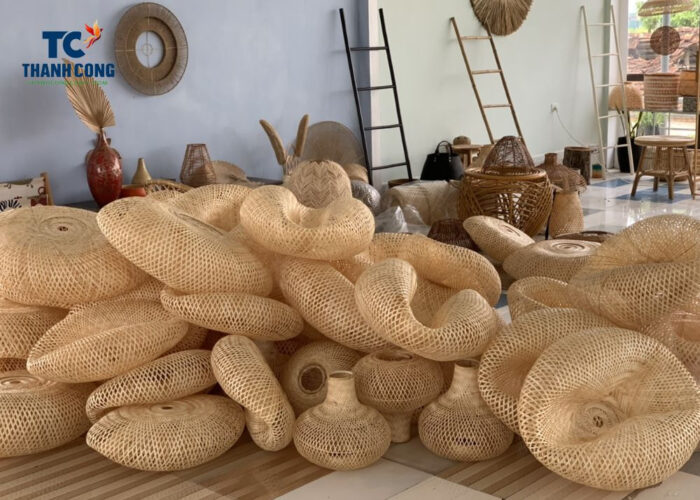
Skilled artisans adeptly interlace thin bamboo strips, allowing for an array of designs and patterns to emerge. These patterns can range from minimalist and contemporary to intricate and traditional, catering to diverse aesthetic preferences.
11. Bamboo is used for scaffolding
Bamboo’s tensile strength, combined with its lightweight nature, makes it an excellent choice for constructing scaffold frameworks. It can withstand the weight of workers, tools, and construction materials, ensuring a secure and stable platform for elevated work.
The flexibility of bamboo is another advantage that lends itself well to scaffolding applications. Bamboo poles can be easily cut, shaped, and joined, allowing for adaptable scaffold designs that cater to the unique requirements of each construction project. This flexibility is particularly useful when working on irregular or uneven surfaces.
12. Bamboo is used as Handbag
The use of bamboo in handbag design introduces a refreshing aesthetic that stands out amidst conventional materials. The distinctive grain and color variations of bamboo give each handbag a one-of-a-kind appearance, adding a touch of individuality to the fashion ensemble. Bamboo’s innate elegance effortlessly lends itself to a range of styles, from minimalist to intricate designs, catering to diverse fashion preferences.

Bamboo fibers are surprisingly resilient, allowing for the crafting of handbags that withstand the rigors of daily use. When carefully woven, bamboo creates a sturdy structure that provides ample support for carrying personal belongings, while its natural resistance to moisture adds to the longevity of the bag.
13. Bamboo is used as Basket
Bamboo is a versatile and sustainable material that has been used for centuries to make various kinds of baskets. Bamboo baskets are durable, lightweight, and aesthetically pleasing.
Bamboo strips are meticulously interwoven to form the base, sides, and often a handle of the basket. The weaving patterns can vary, ranging from simple and functional designs to intricate and decorative styles that showcase the weaver’s skill.
The resulting wholesale bamboo baskets offer a multitude of uses. From storing and transporting goods to serving as elegant containers for everyday items or even ornamental pieces, bamboo baskets exhibit both form and function.
14. Bamboo is used as Bamboo cups
The natural grains and textures of bamboo lend each cup a unique appearance. From sleek and contemporary designs to rustic and traditional aesthetics, wholesale bamboo cups offer a diverse range of visual styles.
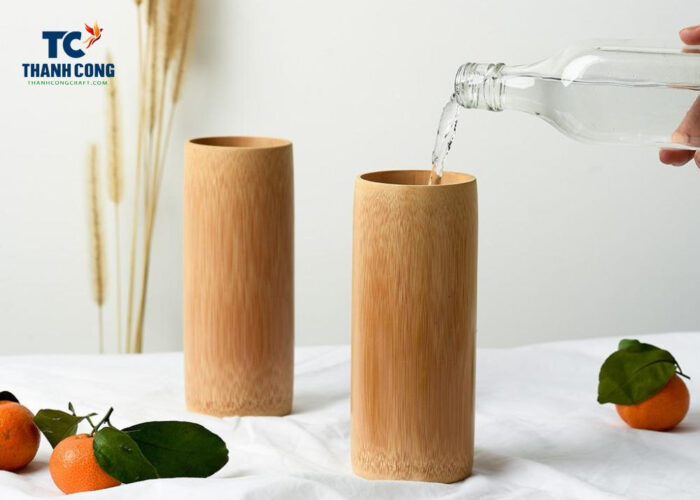
Bamboo’s natural insulating properties help maintain the temperature of beverages, making these cups suitable for both hot and cold drinks. Despite their lightweight nature, bamboo cups are surprisingly durable. They can withstand everyday use and are less prone to breakage than delicate glassware.
15. Bamboo is used as Chopsticks
Bamboo, with its inherent strength and sustainable qualities, plays a significant and enduring role as the material of choice for crafting chopsticks. These traditional utensils have been an integral part of culinary cultures across the world, and bamboo’s adaptability makes it the perfect medium for creating elegant and functional chopsticks that enhance the dining experience.
The natural beauty of bamboo, with its grains and textures, lends a unique and pleasing aesthetic to each pair of chopsticks. From simple elegance to intricate designs, bamboo chopsticks offer a range of visual styles.
16. Bamboo is used as Spoon
Spoons and forks are made from premium bamboo material, meticulously processed to ensure exceptional hardness and durability, followed by a meticulous hand-polishing process. Bamboo spoons do not contain any harmful paints, ensuring they have no impact on food and guaranteeing safety for users’ health.
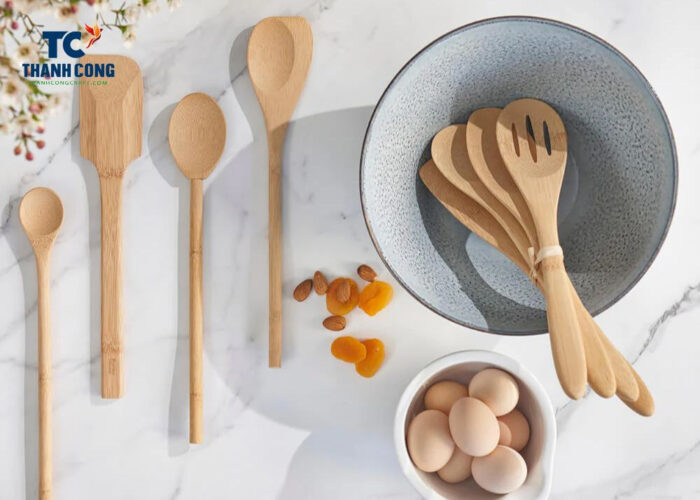
Bamboo spoons have a smooth and highly robust surface, water-resistant, and do not retain any odor or color from food. This makes cleaning easy and contributes to minimizing the presence of harmful bacteria and mold.
17. Bamboo is used as bowl, placemat
Bamboo serves as a versatile and sustainable material for crafting bowls and plates, showcasing its adaptability in everyday essentials. This natural resource, with its strength and eco-friendly characteristics, is transformed into functional and aesthetically pleasing tableware that harmonizes utility with environmental consciousness. This product line offers exceptional durability, enabling you to utilize it repeatedly without encountering damage or concerns of deterioration.
18. Bamboo is used as Cabinet
With unique appearance, and sustainable attributes, bamboo has become a popular choice for crafting cabinets that seamlessly blend functionality and aesthetics.
The natural grains and textures of bamboo give cabinets a distinct and visually pleasing appearance. From modern minimalist designs to rustic and traditional styles, bamboo cabinets cater to diverse interior design preferences.
Bamboo cabinets are relatively easy to maintain. They are less prone to warping or cracking and can be kept in good condition with regular cleaning and minimal upkeep.
19. Bamboo is used to make Table, Chair
Bamboo’s versatility extends to creating essential pieces of furniture such as tables and chairs. This natural material, cherished for its strength, eco-friendliness, and aesthetic appeal, is harnessed to craft furniture that harmonizes utility, sustainability, and design.
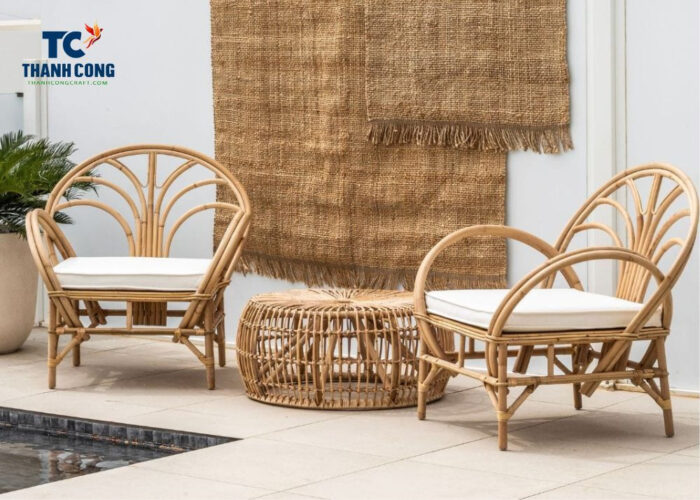
Despite its lightweight nature, bamboo possesses impressive strength and resilience. Tables and chairs made from bamboo are remarkably sturdy and capable of withstanding regular use.
20. Bamboo is used to make rugs
Bamboo’s used to craft rugs that offer both style and functionality. This natural material, renowned for its strength, sustainability, and aesthetic appeal, adds a unique touch to interior spaces while aligning with eco-conscious living.
The natural textures and shades of bamboo create a distinct visual charm in rugs. From simple and modern designs to more intricate patterns, bamboo rugs complement various interior aesthetics. Bamboo rugs are soft underfoot, providing comfort and warmth while maintaining their robust structure.
Above is 20 Uses Of Bamboo That You Didn’t Know? If you have any further questions, please don’t hesitate to contact Thanh Cong Craft email at info@thanhcongcraft.com or message us at WhatsApp: +84967485411. Hope to serve you soon! Best regard!


